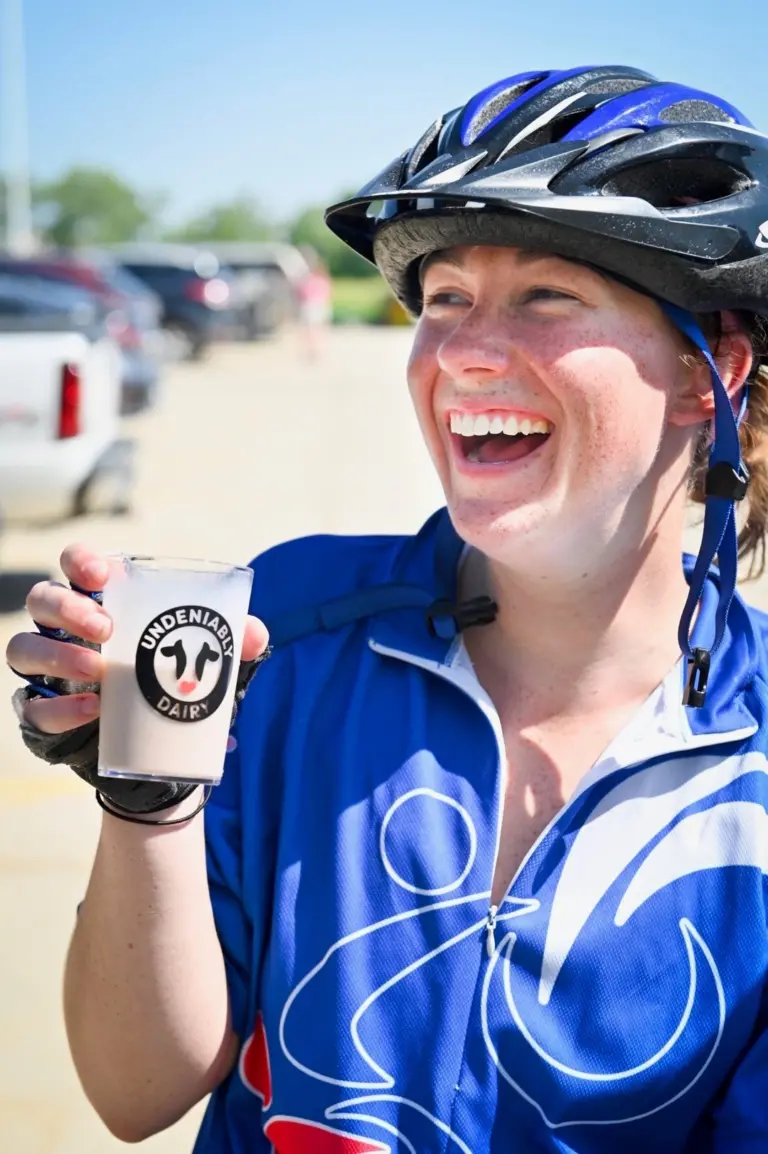Why Milk
With essential nutrients, including protein, phosphorus, calcium and vitamins A, D, B2 (riboflavin), B3 (niacin), B5 (pantothenic acid) and B12 (cobalamin), milk provides a powerful nutrient package that is a great addition to a healthy diet. Milk makes an excellent recovery beverage for athletes, as it contains naturally-occurring protein and calcium that is easily absorbed by the body, keeping bones strong so that athletes are less likely to experience injuries.
There are numerous benefits to drinking milk:
- Helps muscle building and recovery
- Replenish glycogen stores
- Strong bones and teeth
- Energy from protein, carbohydrates and fat
- Source of vitamin D and other important vitamins and minerals
The 2020-2025 Dietary Guidelines of Americans recommends 3 servings every day for ages nine and older of fat-free or low-fat dairy.
Chocolate Milk As A Recovery Beverage
Chocolate milk contains a higher carbohydrate content than regular white milk. The combination of carbohydrates and protein in chocolate milk work together to refill glycogen stores, decrease muscle breakdown and encourage protein synthesis. This combination aids in recovery post-activity.
Optimize Nutrition
Chocolate milk provides a great combination of nutrients for athletes. It can be a nutritious option by itself, or easily be paired with a whole grain, fruit or vegetable for an even more nutritious snack. Filling up on healthy snacks and meals ensures athletes are eating well for performance and health.

Making Milk Available to Athletes
Supplying chocolate milk for student athletes may be a challenge. Often, the cafeteria and fitness areas of a school or university are far apart. The food service department may be closed after school and athletic departments may not have adequate refrigeration space, or have refrigeration at all.
With some planning, these hurdles can easily be overcome. Consider providing coolers for coaches or supplying them with Ultra-High-Temperature (UHT) milk boxes. UHT milk is pasteurized to a higher temperature than refrigerated milk, is shelf-stable and can be consumed at room temperature or served chilled. UHT milk boxes are a great option if coolers are unavailable.
Collaborate with school athletic departments to determine how to provide chocolate milk for athletes. Consider investing in coolers that can be transported to and from the school. If the team or individual athlete is traveling, the portable cooler can travel along! Ensure that if milk is not UHT, the cartons or jugs are stored at 35°F or lower.
